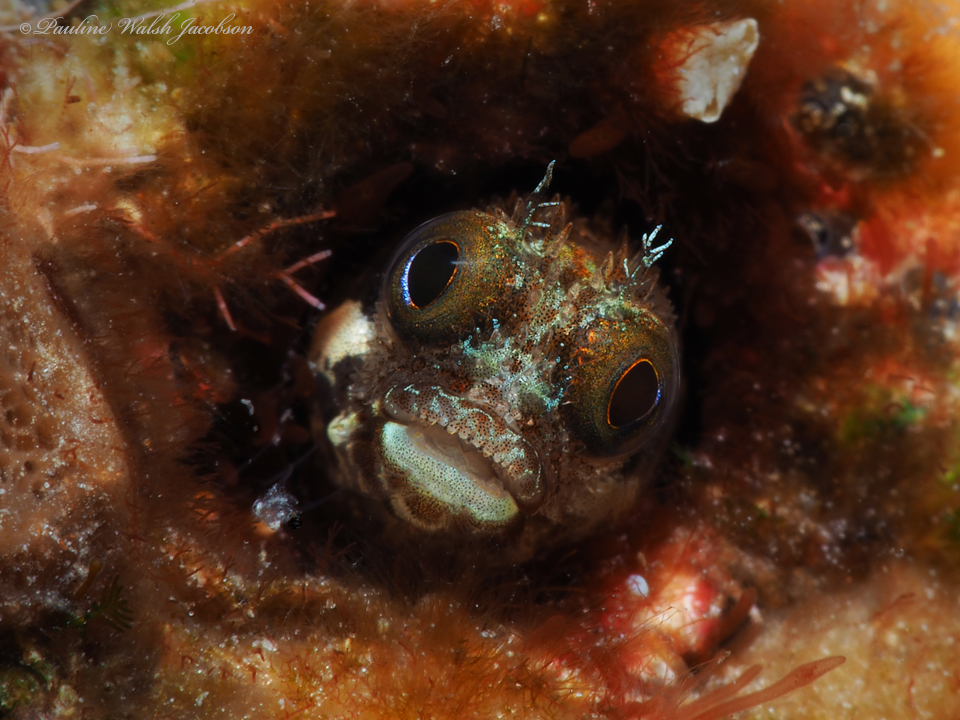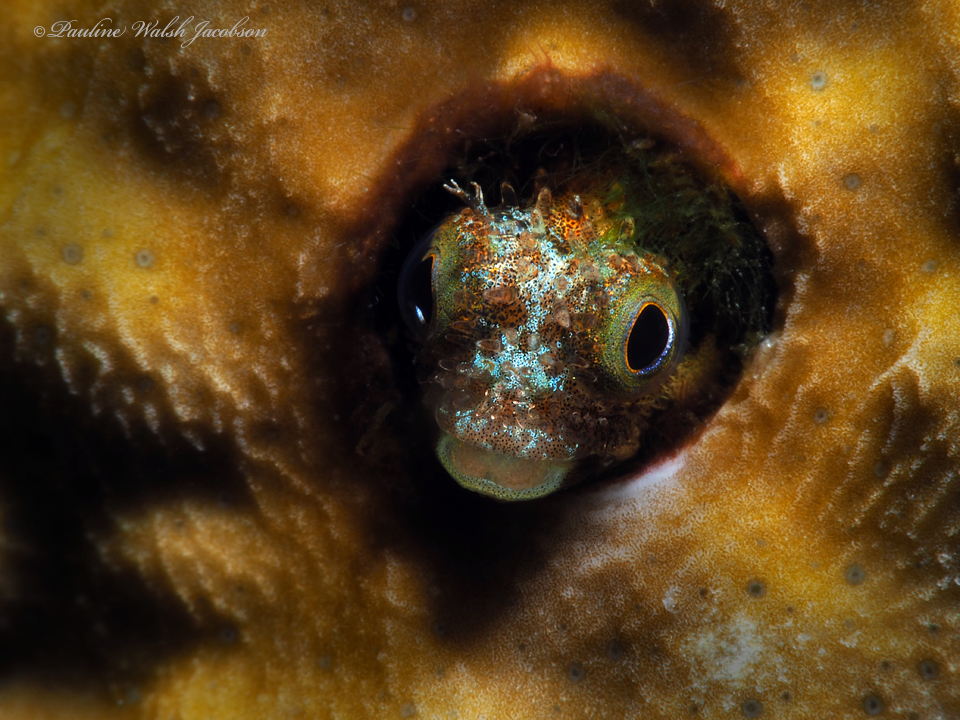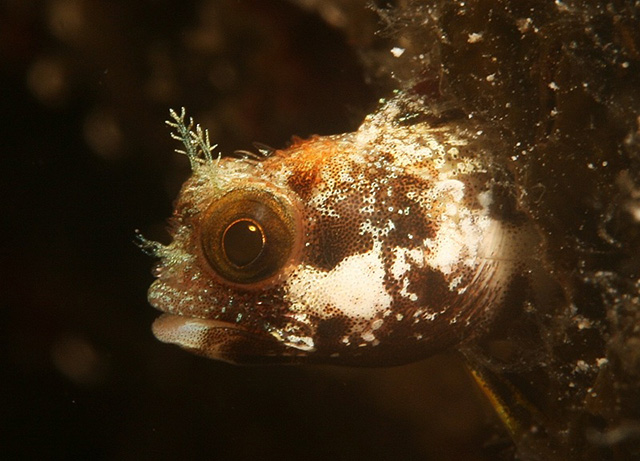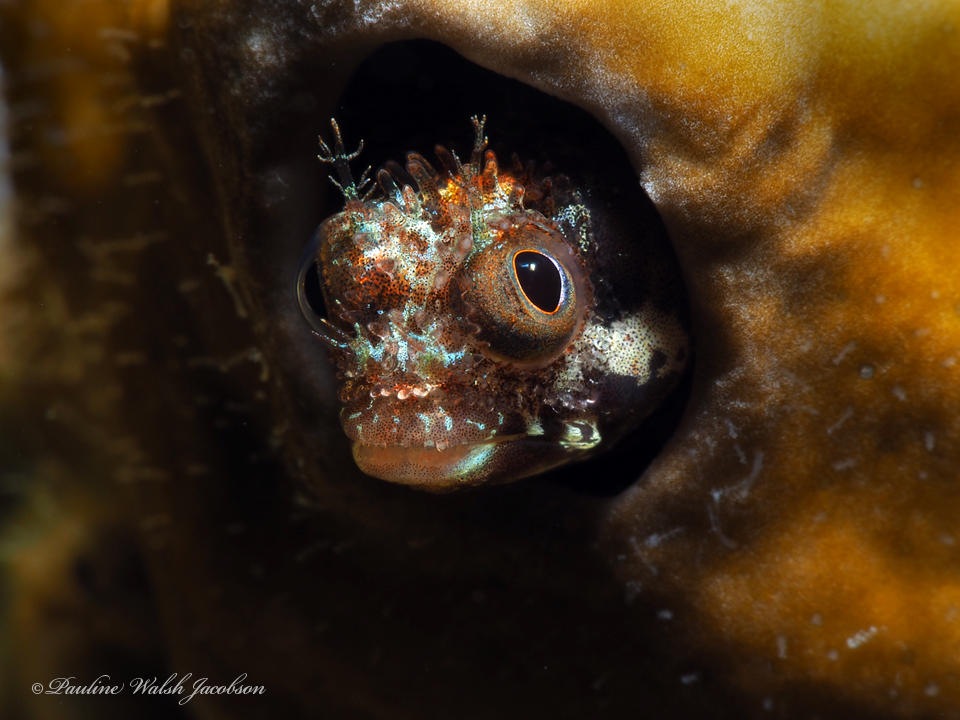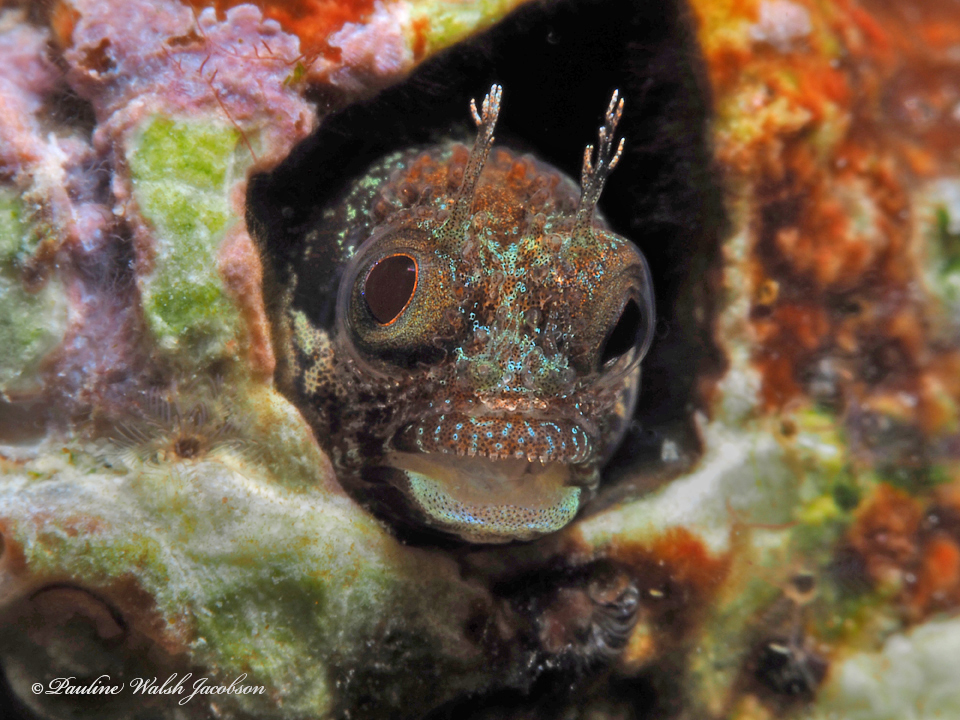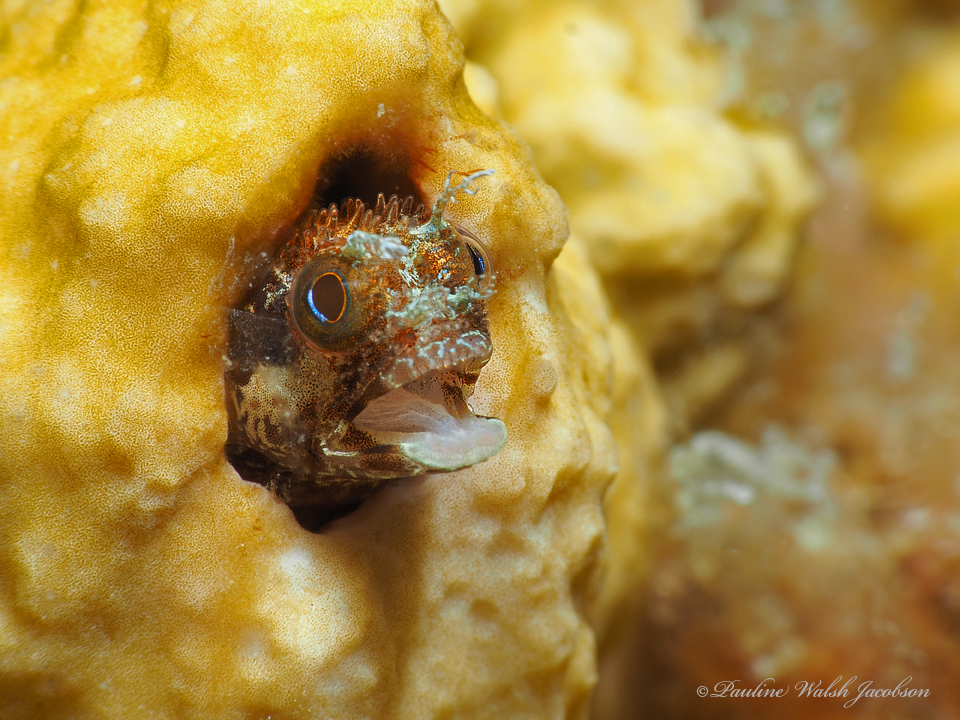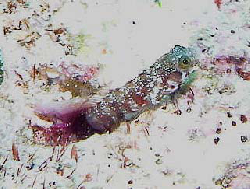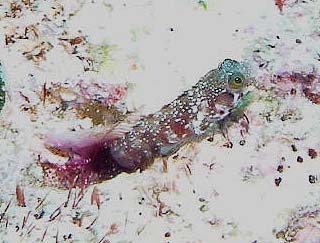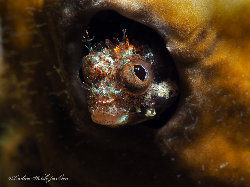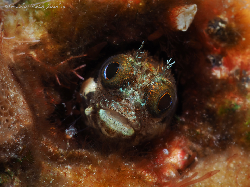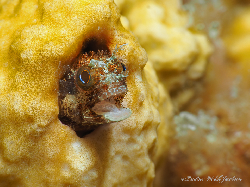Acanthemblemaria maria Böhlke, 1961
Description
Anal spines: 2. Species distinguished by: sides of body with series of dark bands or large oval blotches; top of head often spiny; patch of cranial spines on nape extends posterior to supratemporal commissural pore, almost to dorsal-fin origin; inner rim of posterior infraorbital bone spinous or with tuberculate spines; two or more rows of teeth on each palatine bone; dorsal fin consisting of spines and segmented rays; total dorsal-fin elements 29 to 40. Common amongst Chaenopsids: small elongate fishes; largest species about 12 cm SL, most under 5 cm SL. Head usually with cirri or fleshy flaps on anterior nostrils, eyes, and sometimes laterally on nape; gill membranes continuous with each other across posteroventral surface of head. Each jaw with canine-like or incisor-like teeth anteriorly; teeth usually also present on vomer and often on palatines (roof of mouth). Dorsal-fin spines flexible, usually outnumbering the segmented soft rays (numbering 7 to 37), spinous and segmented-rayed portions forming a single, continuous fin; 2 flexible spines in anal fin; pelvic fins inserted anterior to position of pectoral fins, with 1 spine not visible externally and only 2 or 3 segmented (soft) rays; all fin rays, including caudal-fin rays, unbranched (simple). Lateral line absent. Scales absent (Ref.52855).
Common Names
Taxonomic Hierarchy
Kingdom: Animalia
Phylum: Chordata
Class: Teleostei
Order: Blenniiformes
Family: Chaenopsidae
Genus: Acanthemblemaria
Species: Acanthemblemaria maria Böhlke, 1961
Climate Zone
Location
Biology
Inhabits limestone slopes rather than patch reefs and these slopes are usually dotted with small brain corals, stinging coral, sea fans, whips, and sea urchins (Ref. 5521).
Habitat
associated
Conservation Status
Least Concern
Threat to Humans
Harmless
